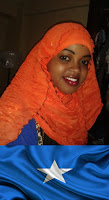 |
Bisharo Ali Hussein
Galkacyo,Somalia
|
Somali people are facing a post-conflict dilemma: prioritizing recovery when the peace objective prevails over the economic development objective. Yet at the heart of the nation building we must look to the future and ensure that youth unemployment is also on the agenda.
According to Humanitarian agencies, as a group, youth are more vulnerable to social, economic and political exclusion than older age cohorts who are relatively better protected by the economy, social policy and customs. Somali youth face multiple structural barriers built into the family, organizations, local government and society at large. At the family and community level, barriers are shaped by gender, identity, class, sexual orientation, age, family, community, education and ability. Powerlessness comes from institutions, such as through dis-empowering laws, and from a lack of individual and collective resources.
The majority of youth in Somalia are not equipped with the knowledge necessary to be fully involved as active participants in their communities. And they are silenced and tokenized because they are young. Other forms of oppression, such as gender discrimination, may operate alongside ageism, making it a struggle for youth to simply survive, much less assert their identity. While youth in south central Somalia face steeper obstacles than youth in the post-conflict northern areas, both confront similar challenges relating to the different dimensions of exclusion, including poor education, a lack of access to livelihoods and no outlet for political participation.
“…strategies to empower youth and local communities to work towards resolving conflict and increase civil society participation in conflict resolution and peace building should be key areas of work”
The statements, comments, or opinions expressed through the use of IGNITE THE YOUTH are those of their respective authors, who are solely responsible for them, and do not necessarily represent the views held by the entire society of IGNITE THE YOUTH.


YOU ARE TELLING THE TRUE LADY--KEEP IT UP
ReplyDeleteGreat article, truly useful and enlightening. The future of Somali youth is being ignored by politicians. More advocacy is needed, keep up the good work.
ReplyDelete